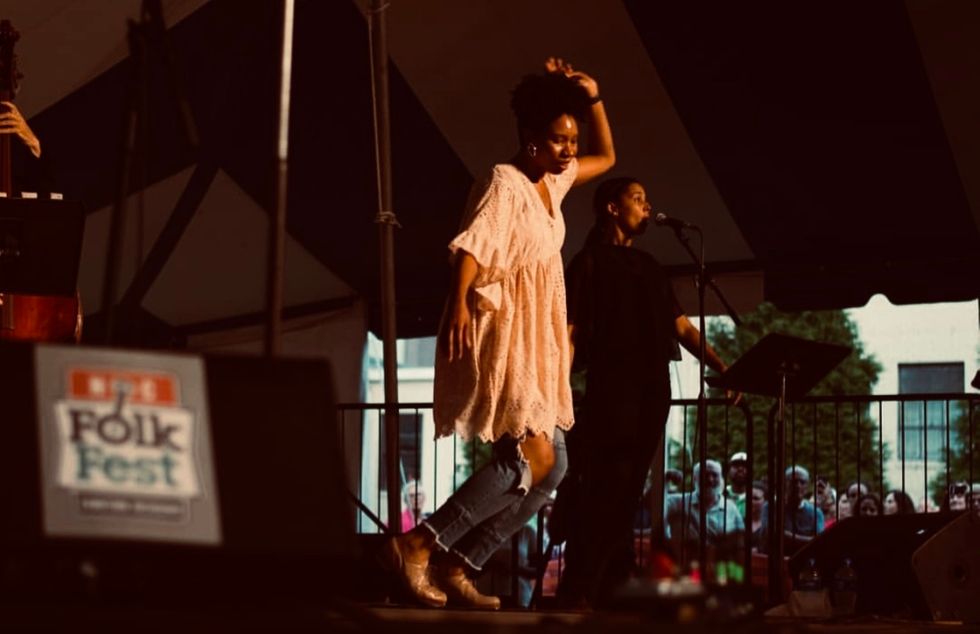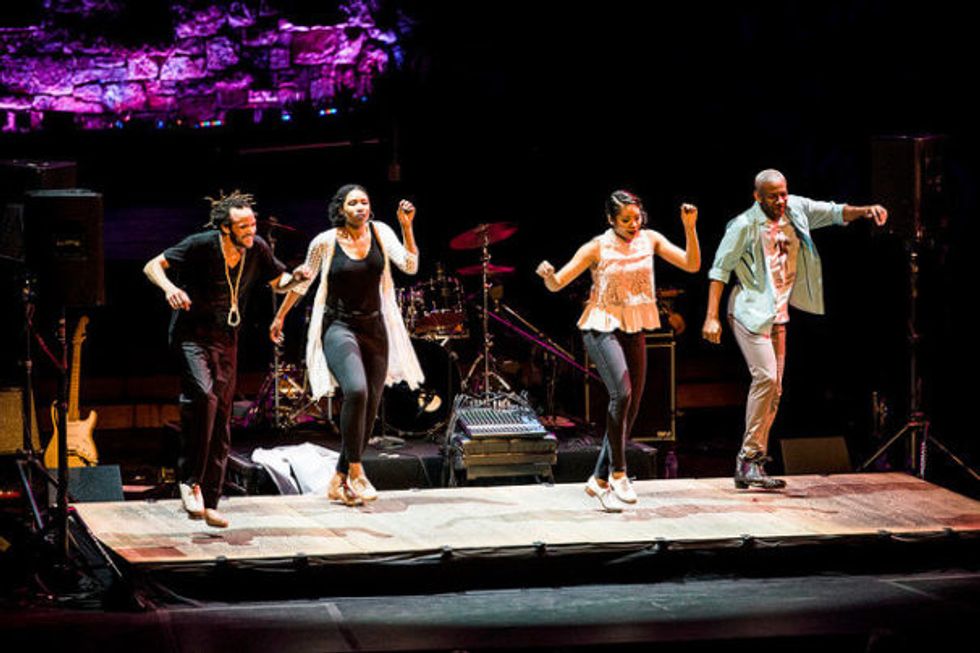
Recently, I posted a thread of tweets elucidating the lack of respect for tap dance in college dance programs, and arguing that it should be a requirement for dance majors.
According to onstageblog.com, out of the 30 top-ranked college dance programs in the U.S., tap dance is offered at 19 of them, but only one school requires majors to take more than a beginner course—Oklahoma City University. Many prestigious dance programs, like the ones at NYU Tisch School of the Arts and SUNY Purchase, don’t offer a single course in tap dance.
Right now, as dance departments throughout the country are figuring out how to decenter Eurocentric dance forms in their curriculums, let’s not forget that tap dance has so often been overlooked in higher education.
This is a problem not only because dance students across the country are missing out on valuable tap training, but also because it neglects an art form that is both uniquely American and uniquely Black.

Courtesy Watson
As someone who has served as a guest lecturer, a choreographer and an adjunct professor of tap dance, I can vouch for the benefits of tap for all college dancers, regardless of the genre of dance they are choosing to pursue. Tap provides a new understanding of musicality and rhythm, enhances dancers’ storytelling abilities, and is a powerful example of how American history can be preserved through sound and movement. And that’s just with having knowledge of the basics.
Plus, there’s lots of misinformation and ignorance about tap’s origins—even within our dance community—that needs to be corrected. The art form is often incorrectly linked to Irish dance, with the story of how William Henry Lane (aka “Master Juba”) interacted with Irish immigrants through trading, as documented by Charles Dickens. While Master Juba was indeed one of tap dance’s innovators, the origins of the form go back to enslavement: To the ring shout; to buck dancing; to the cabins where enslaved Africans would seek joy through song and dance. (In Brenda Dixon Gottschild’s The Black Dancing Body, she explores how these dances were an early form of tap dancing, and how they can still be seen in the art form today.)
Tap also has a long history of being appropriated, whether through minstrelsy, which profited from a caricature of Black life through song and dance, or through the white-washing of Hollywood, where the contributions of dancers like Fred Astaire, Ginger Rogers and Gene Kelly were celebrated while those of Black tap pioneers like John Bubbles, Bill “Bojangles” Robinson and Alice Whitman were often lost or ignored.
Even today, some speak of tap as being “lost” or “dead” when in fact it is thriving—the world just chooses to turn its head in another direction.

Timothy Norris, courtesy of Ford Theatres
Something similar has happened in college dance programs, where tap is treated like an outlier, and is often only offered as an elective, if at all, while ballet is considered the foundation of training for all students. How is it that an art form that came from those who built this country isn’t respected in the same manner as one that came from across the sea? How is it that an art form that originated in the sacred soils of the enslaved American South gets passed over in favor of a European court dance?
Am I saying that ballet needs to disappear from college curriculums? Absolutely not. But I am boldly stating dance programs should give tap dance the same value and respect they give ballet. Ballet is not the only standard for dance, nor is it the “foundation” of dance.
I’m also not saying that everyone needs to major in tap dance, or that everyone will end up performing tap in their career. But I am saying that at least one course of tap dance technique and one course of tap dance history should be required for every student seeking a BA or BFA in dance.
But let’s not make this about checking a box. Dance departments should do their research to ensure they’re hiring high-quality instructors who are armed with the history of tap, and that they are devoting the necessary resources—like a proper floor—to their tap program.
I know this is coming at a time when many departments are dealing with teaching virtually and potential budget cuts during the pandemic. I know many dance programs’ aim at the moment is simply survival. (Please, don’t make tap the first thing you cut when funding is in question.)
But the contributions of Jimmy Slyde, Bunny Briggs and Jeni LeGon deserve to be known just as well as those of George Balanchine, Agrippina Vaganova and Enrico Cecchetti. May we honor the contributions of Steve Condos, Lois Bright and Lon Chaney just as we do Martha Graham, José Limon and Merce Cunningham.



